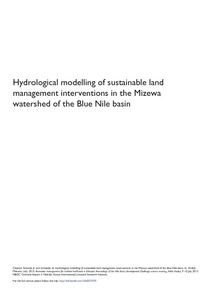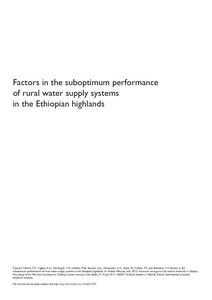Location
Vision, mission and strategy
ILRI's strategy 2013-2022 was approved in December 2012. It emerged from a wide processof consultation and engagement.
ILRI envisions... a world where all people have access to enough food and livelihood options to fulfil their potential.
ILRI’s mission is... to improve food and nutritional security and to reduce poverty in developing countries through research for efficient, safe and sustainable use of livestock—ensuring better lives through livestock.
ILRI’s three strategic objectives are:
- with partners, to develop, test, adapt and promote science-based practices that—being sustainable and scalable—achieve better lives through livestock.
- with partners,to provide compelling scientific evidence in ways that persuade decision-makers—from farms to boardrooms and parliaments—that smarter policies and bigger livestock investments can deliver significant socio-economic, health and environmental dividends to both poor nations and households.
- with partners,to increase capacity among ILRI’s key stakeholders to make better use of livestock science and investments for better lives through livestock.
This is ILRI’s second ten-year strategy. It incorporates a number of changes, many based on learning from the previous strategy (2000–2010, initially produced in 2000 and modified in 2002), an interim strategy (2011–2012) and an assessment of the external and internal environments in which the institute operates.
Members:
Resources
Displaying 386 - 390 of 1152Improving agricultural water productivity through integrated termite management
Termite infestation is symptomatic of severe land degradation in many semi-arid regions of the Nile Basin. One characteristic of land degradation is low organic matter (OM) reserves in vegetative biomass and soil. One consequence is excessive rainwater depletion through non-productive evaporation and runoff leading to low agricultural water productivity and diminished livelihoods. CPWF research demonstrated that rapid restoration of pasture production is possible by providing manure through night corralling of cattle prior to re-seeding termite affected rangeland in Uganda.
Hydrological modelling of a catchment using the SWAT model in the upper Blue Nile basin of Ethiopia
Sustaining upland agriculture and food security is very much constrained by continuing land degradation brought by soil erosion due to lack of effective rainwater management strategies. Recently a large body of research evidence has established that significant potential exists to increase agricultural productivity through sustainable rainwater management interventions. Hydrological models are essential to understand the hydrological response of a catchment. The current paper focuses on hydrological modelling of catchment with SWAT model using its two versions, SWAT-CN and SWAT-WB.
Hydrological modelling of sustainable land management interventions in the Mizewa watershed of the Blue Nile basin
The current paper discusses the use of hydrological modelling tool to understand sustainable land management interventions in the Blue Nile basin of Ethiopia. A micro-watershed named Mizewa with a drainage area of 27 km2 in Fogera district was selected and instrumented with hydrological cycle observation networks in the year 2011. The SWAT hydrological modelling tool was used to simulate landscape-wide Soil and Water Conservation (SWC) investments.
Hydraulic properties of clay soils as affected by biochar and charcoal amendments
Understanding soil hydraulic properties is crucial for planning effective soil and water management practices. A study was conducted to evaluate the effects of different biochar and charcoal treatments on soil-hydraulic properties of agricultural soils. Biochar and charcoal treatments were applied on 54, undisturbed soil-columns, extracted from three-elevation ranges, with replications along three transects. Daily weight losses of freely draining soil-columns and soil moisture contents, at five tensions, were measured.
Factors in the suboptimum performance of rural water supply systems in the Ethiopian highlands
Access to safe drinking water services in the Ethiopian Highlands is one of lowest worldwide due to failure of water supply services shortly after construction. Over hundred water supply systems were surveyed to find the underlying causes of failure and poor performance throughout the Amhara Regional State. The results show generally that systems with decision-making power at the community level during design and construction remained working longer than when the decisions were made by a central authority.






